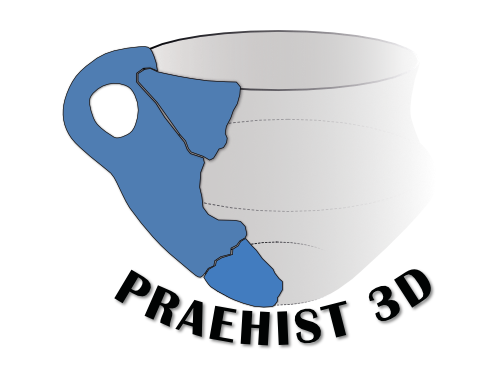3 Years ago, I took a series of photos for a 3D model of the Brandenburg Roland. Sadly, these were not enough to build a watertight model. One week ago, my brother had the opportunity to re-shoot the statue and send me the pictures I needed to complete the model via mail.
The statues of Roland and the new freedom of medieval cities
The Roland statues were erected in cities that got its own markets and courts as a visible sign of an emancipated free city. They were mostly made from wood and sandstone and can be found near the city halls and marketplaces of many northern German towns. Figures like these are also found in middle Europe, Latvia and Croatia, as well as north and South America. In this context, they have a more religious meaning than their German counterparts.
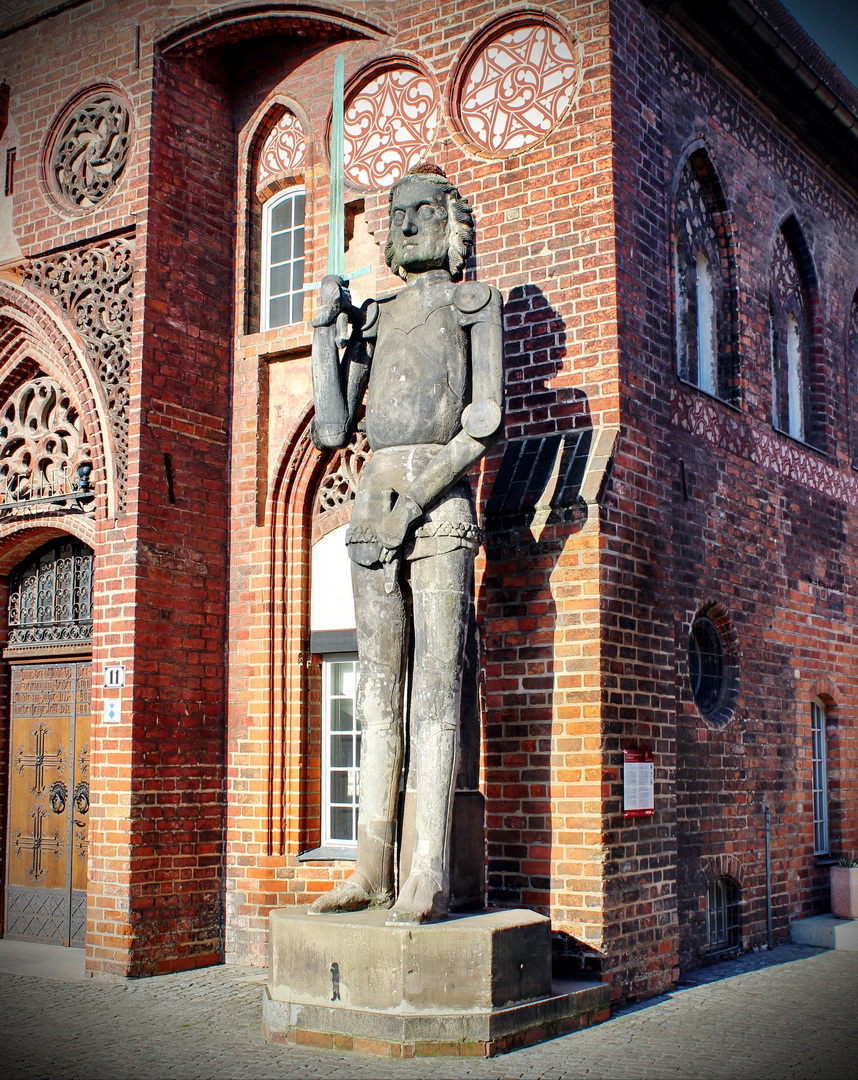
The name Roland comes from hroutland, a knight in the service of Charlemagne who was killed in 778 while fighting the waskonen. The only historic evidence of hroutland can be found in the vita caroli magni, by einhardt, in two small sentences.
Around 1100 AD, a heroic song was written basing on the legendary hroutland. It is 291 verses long and shows the bravery of Roland in his fights against certain doom. Roland statues were a sign of emancipation of a city from the rule of the church and new-found freedom.
One of the most known statues can be found in Brandenburg Havel in Eastern Germany and is known explorable as a 3D model.
The moving history of the Brandenburg Roland
The gothic city hall of the Brandenburg old city was built in several phases since the middle of the 15. Century. A sandstone Roland statue was added in 1474. It shows a knight in full plate armor holding an upright sword in its right hand and a dagger in front of his body. On its head is a crown like mold that symbolizes a special herb (Donnerkraut) that should protect the statue from thunder and lightning.
In 1716 the German Kaiser Friedrich Wilhelm I allowed to relocate the knight to the new city center because it was hindering soldiers in their marching drills in its old location. The Roland remained at the new city hall until its incorporation in 1941.
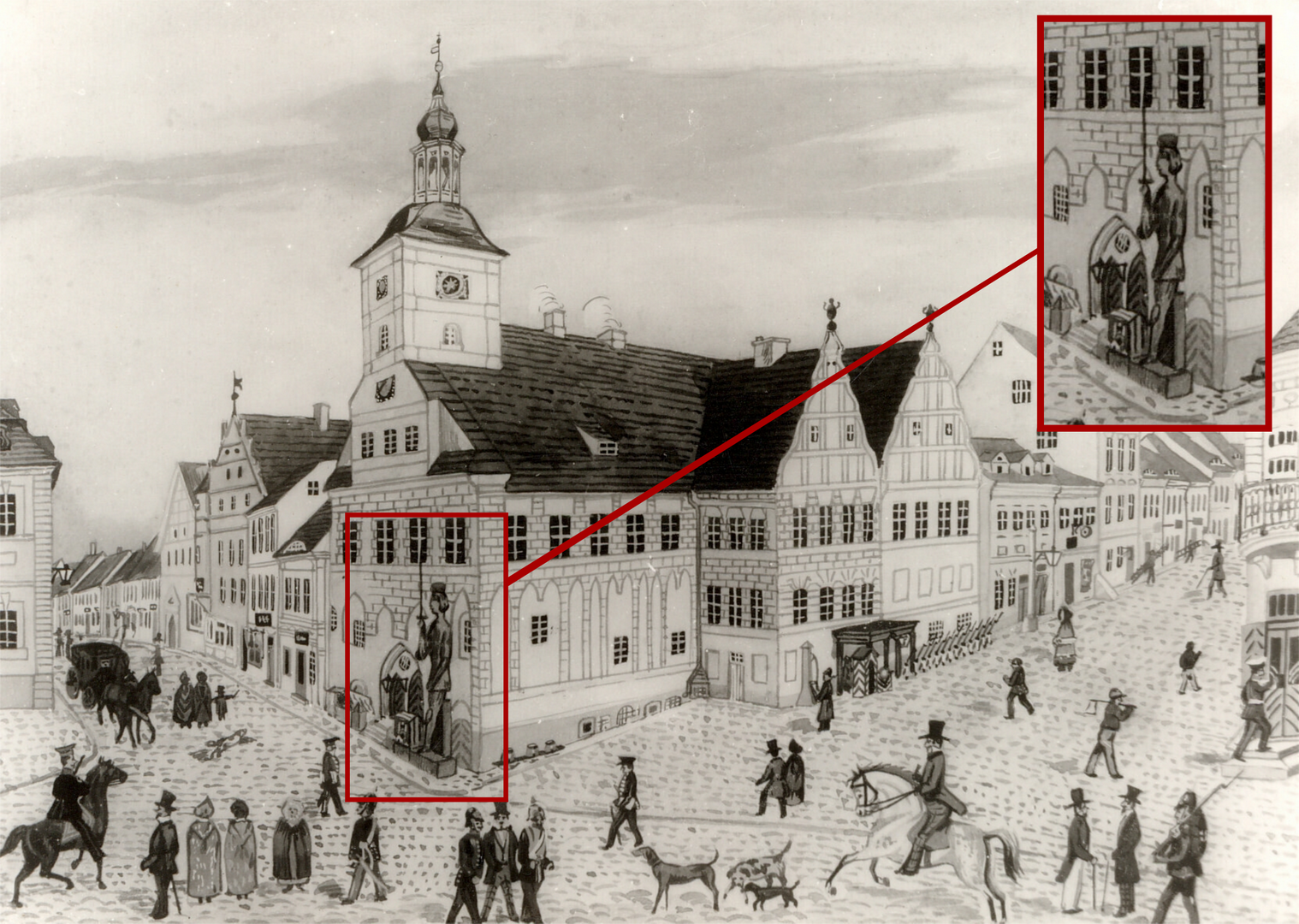

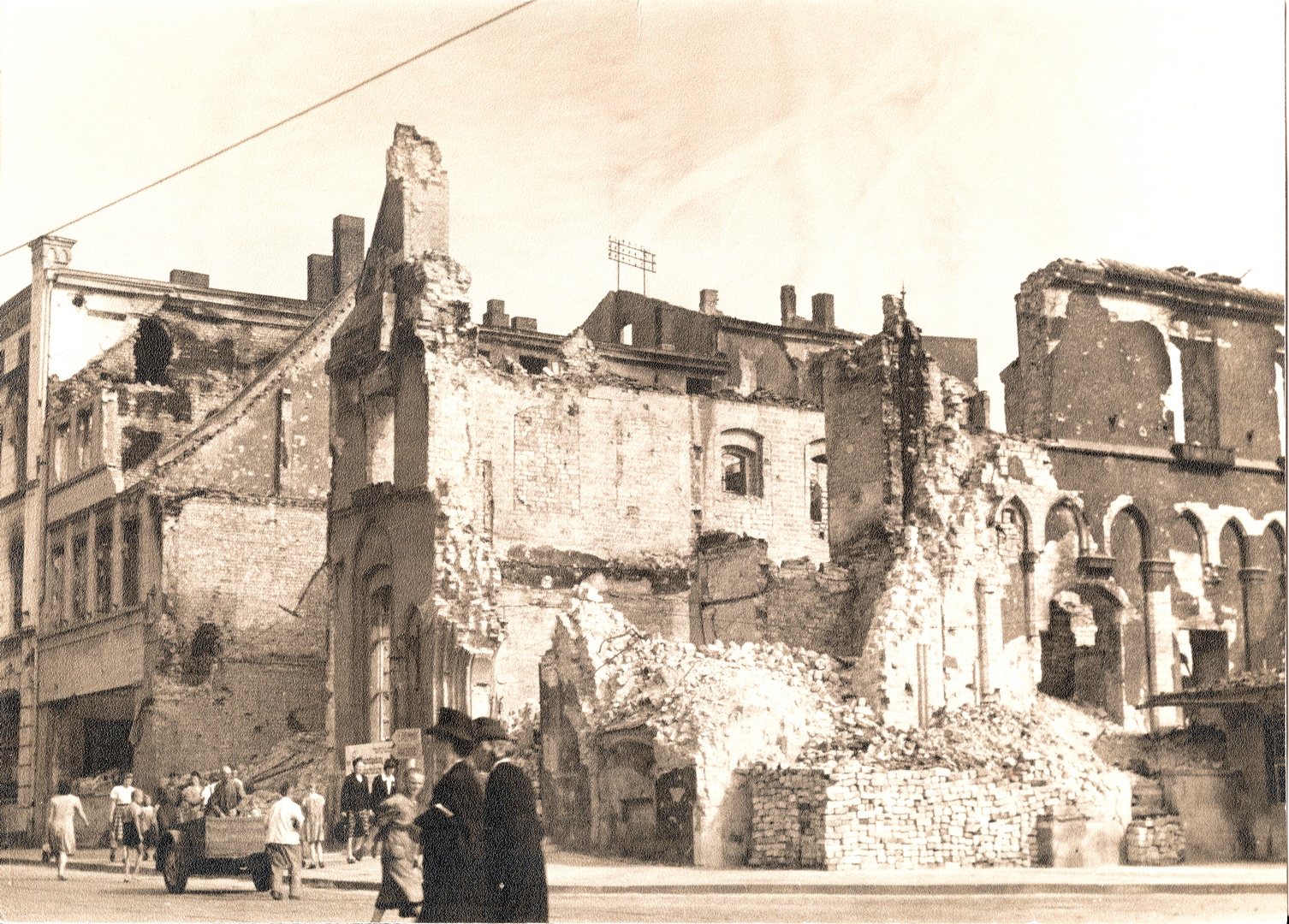
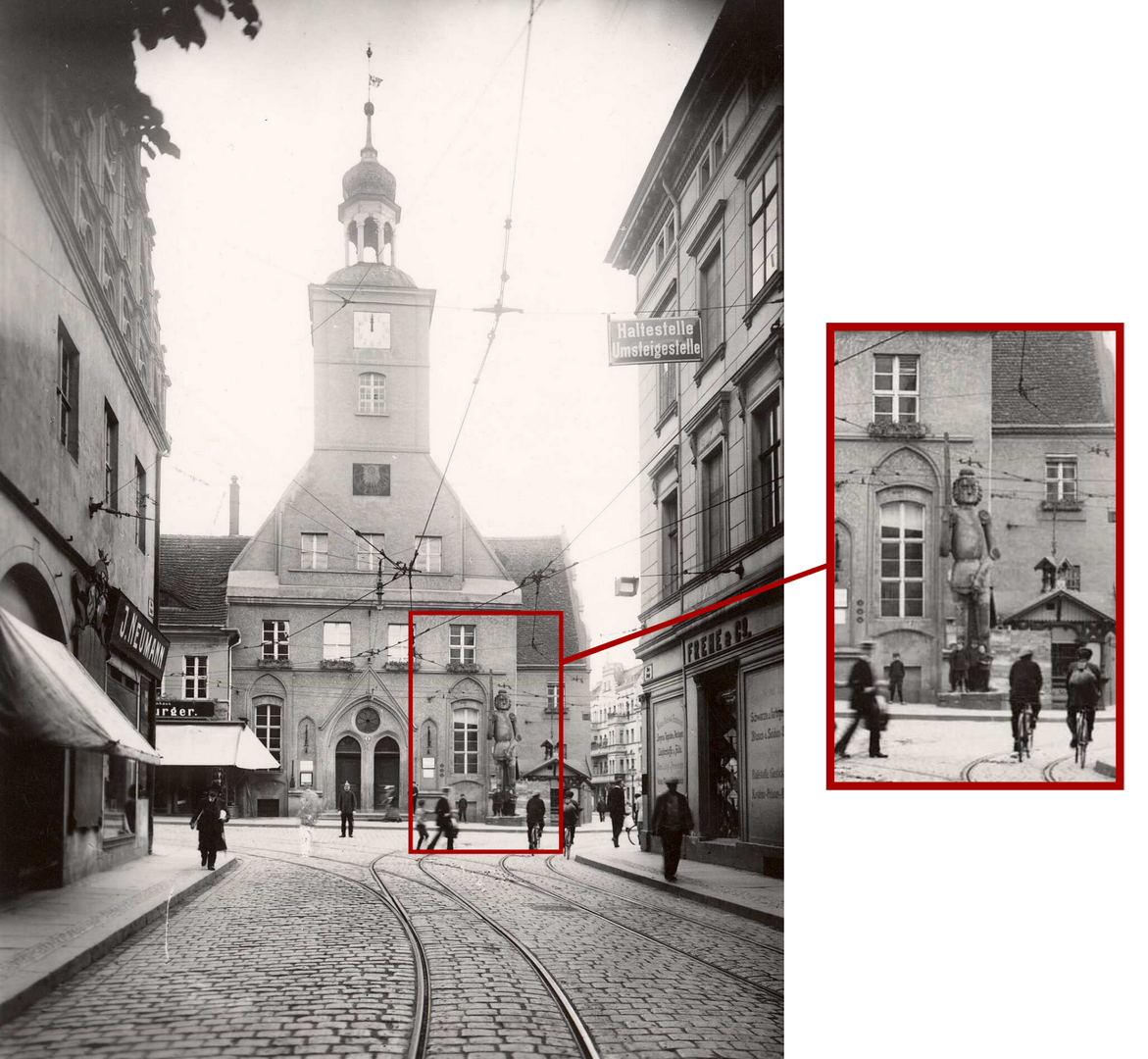
After the second world war the new city hall was destroyed, but the Roland survived a scratch in storage. In 1946, it was relocated again to the old city hall in its original place.
Medieval statue in 3D
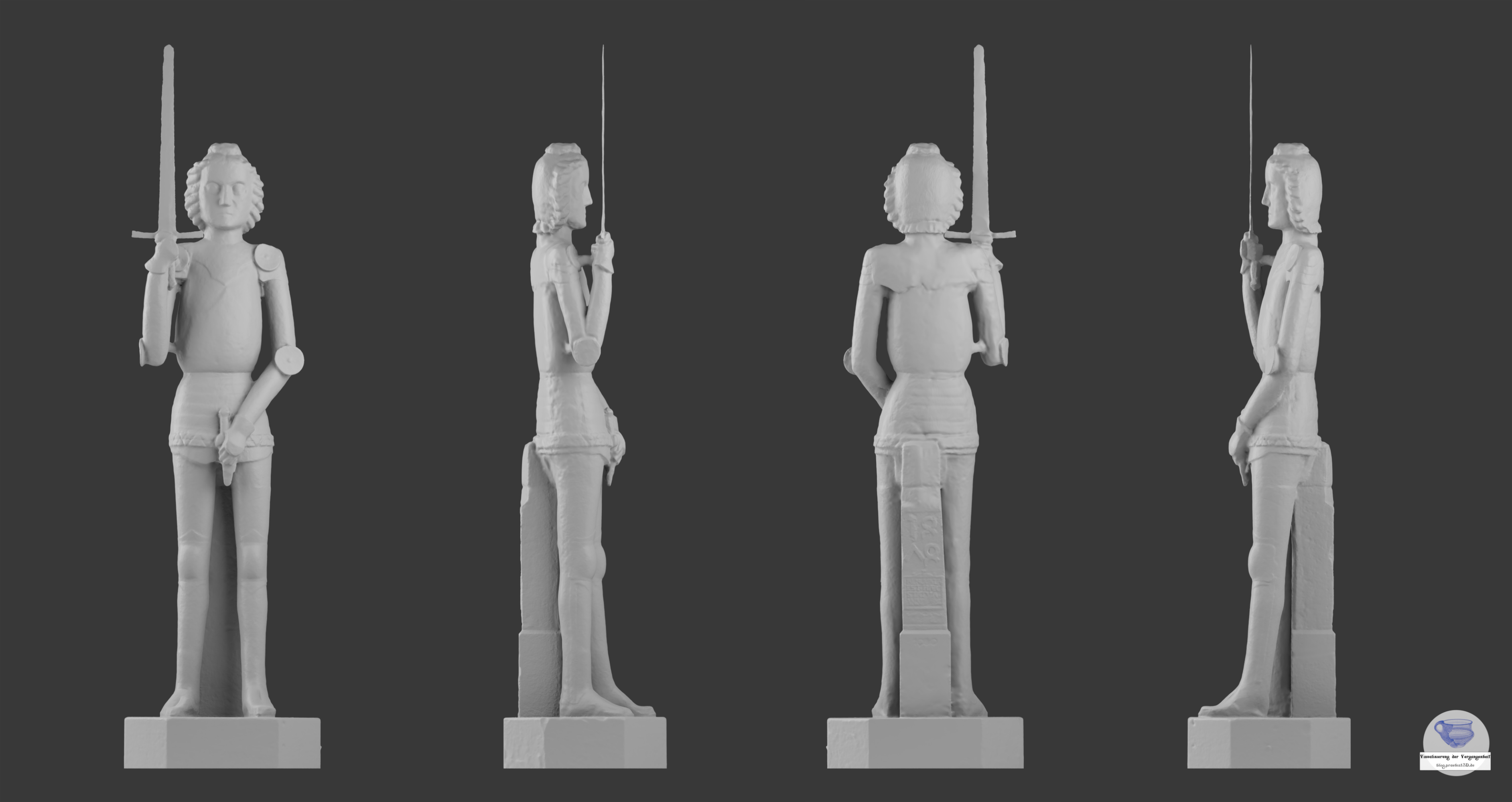
As mentioned above, the pictures for the photogrammetry model were taken in 2014 and 2017. Overall, 76 pictures were used to reconstruct a model in Agisoft Photoscan. One problem is that the sandstone knight stands right in front of the city hall, so it’s difficult to get good photos from the backside. These problems resulted in some scanning errors that could be cleaned in 3D coats voxel mode.
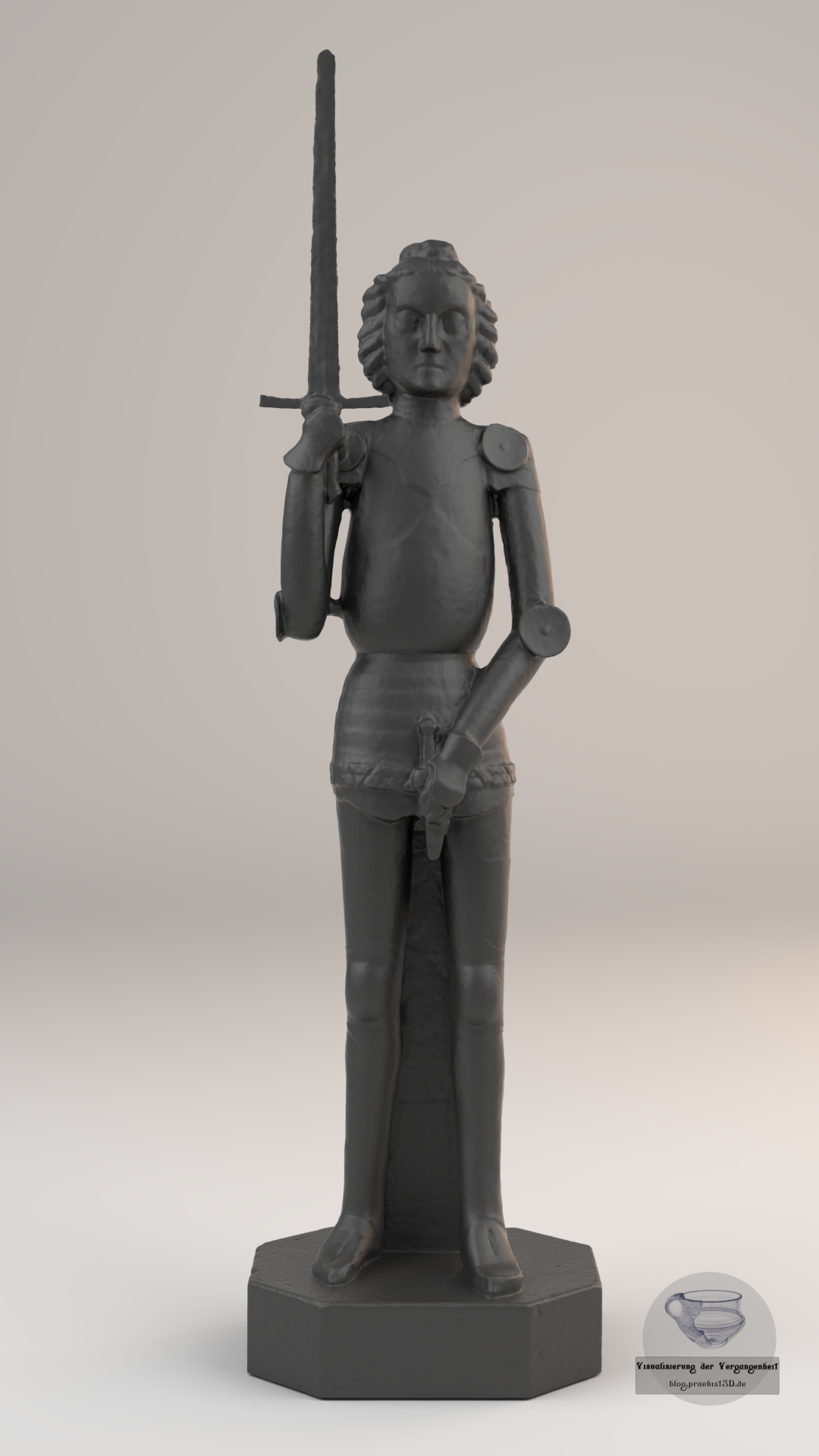
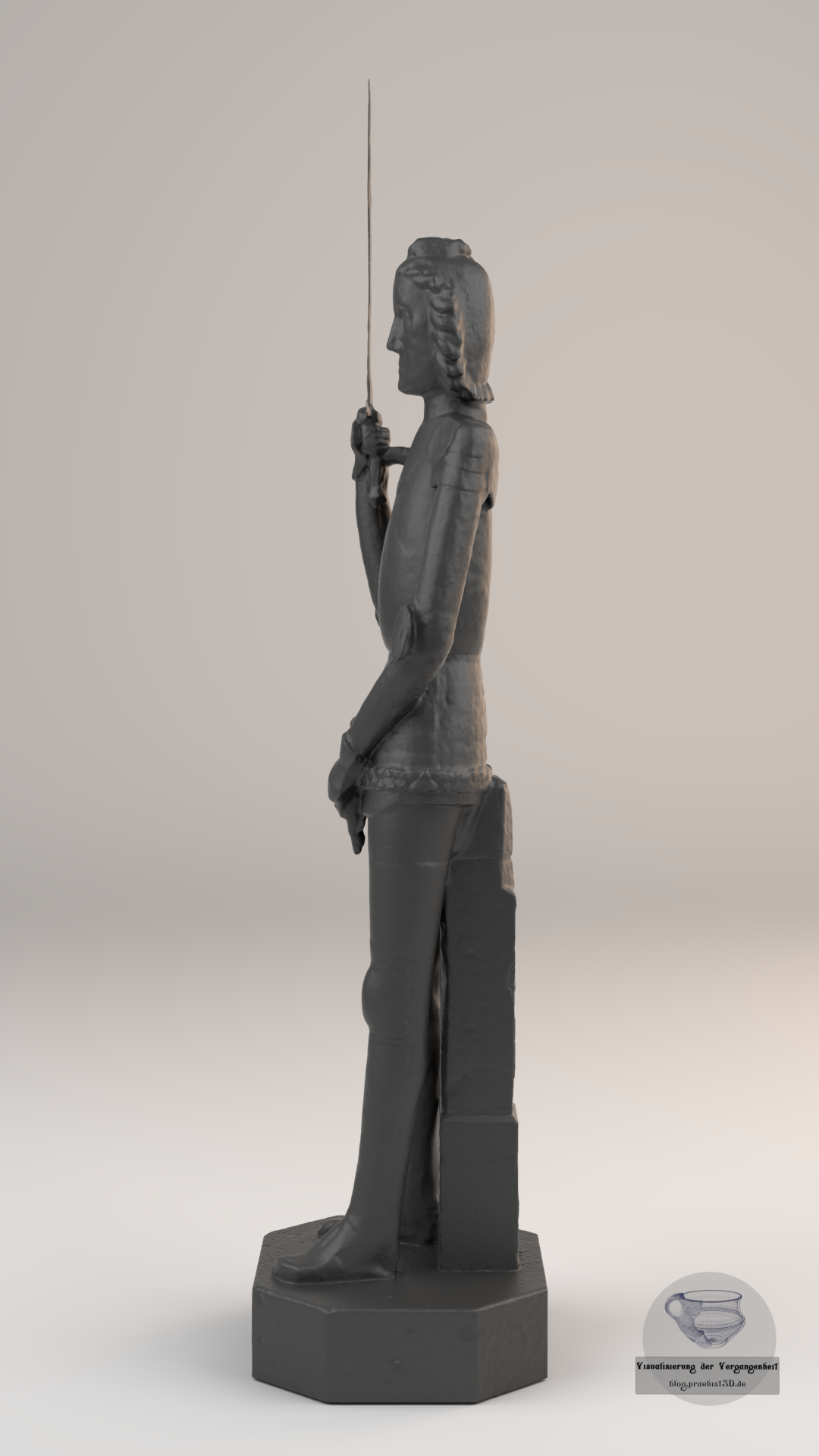
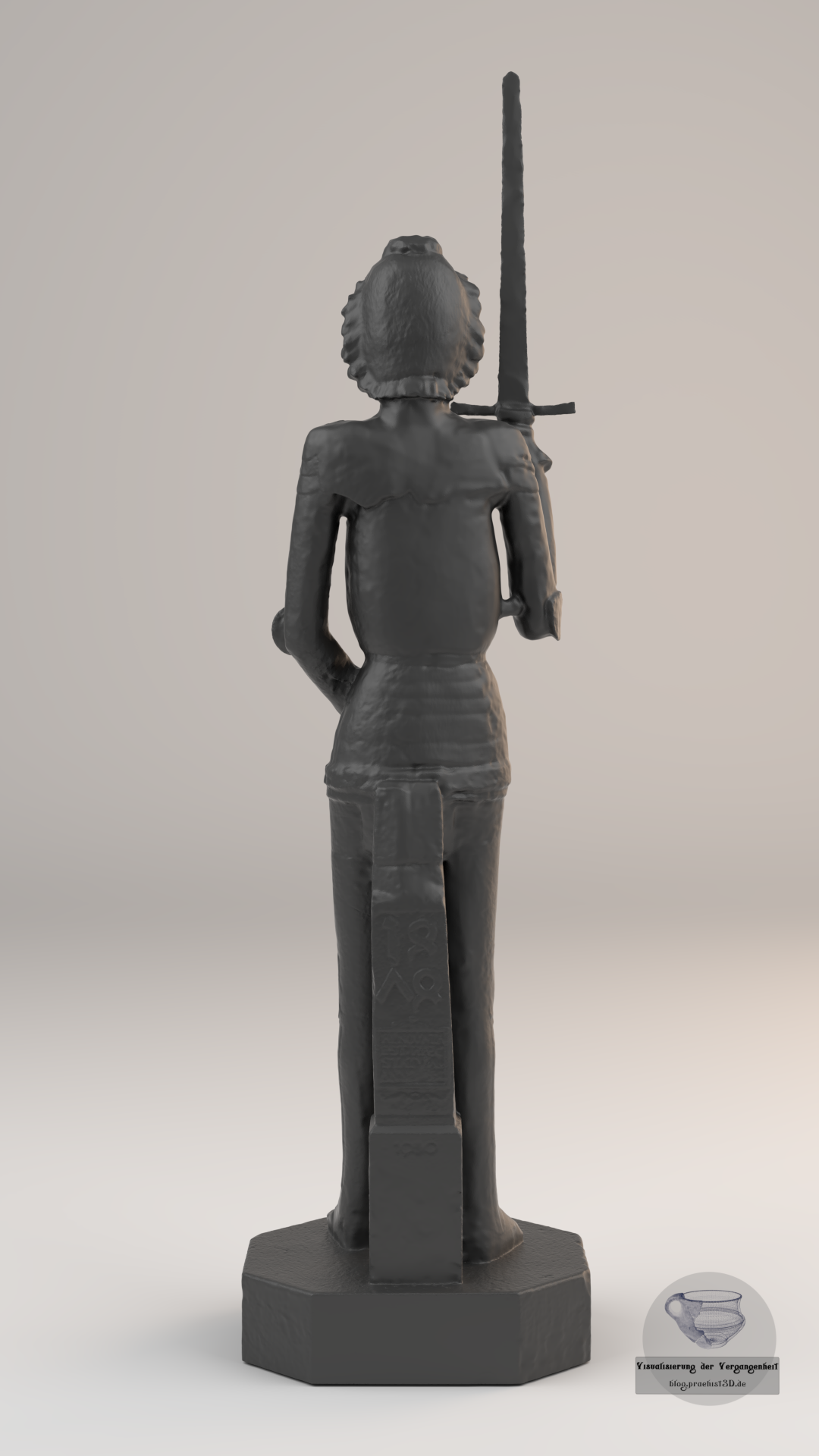
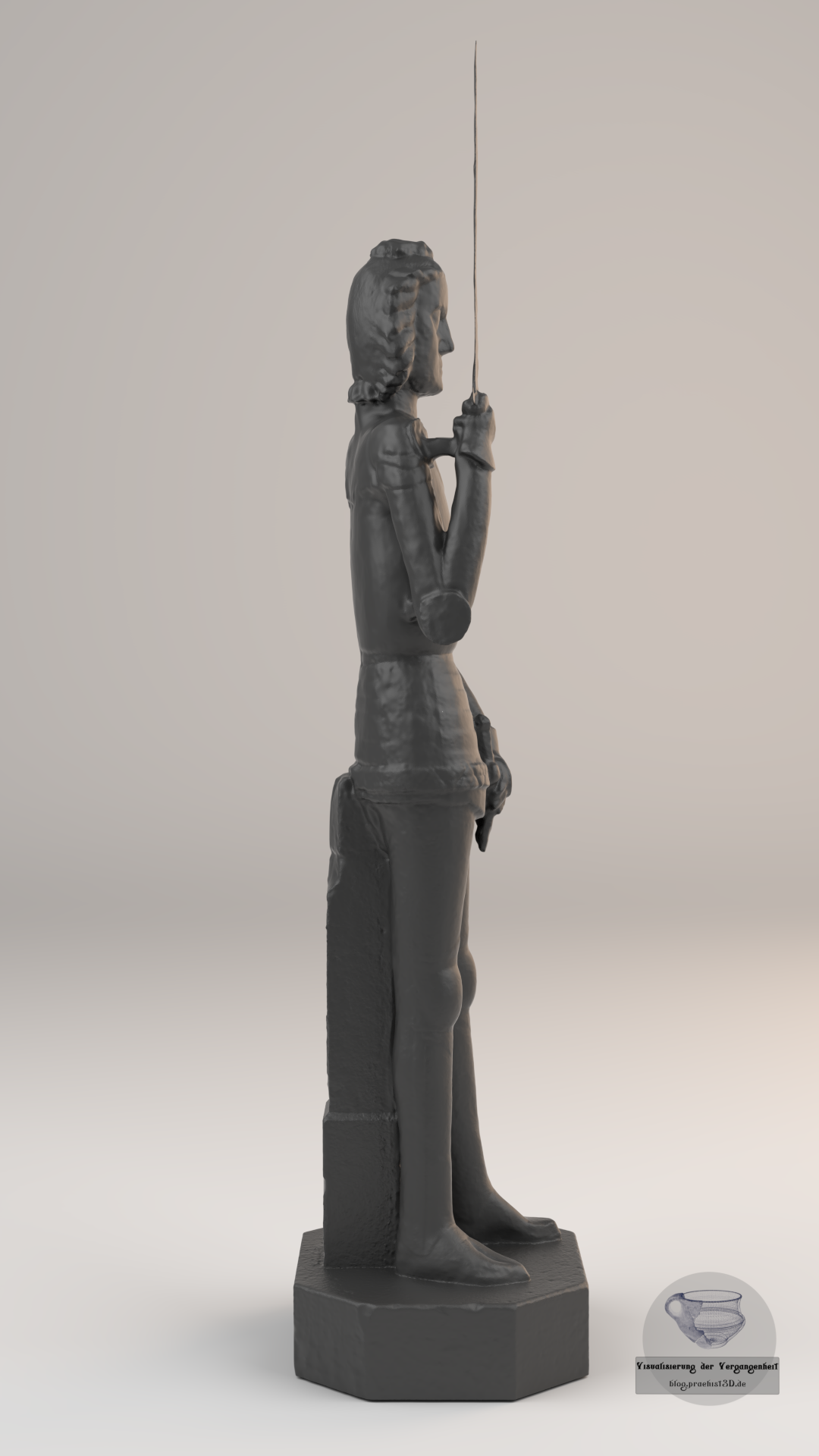
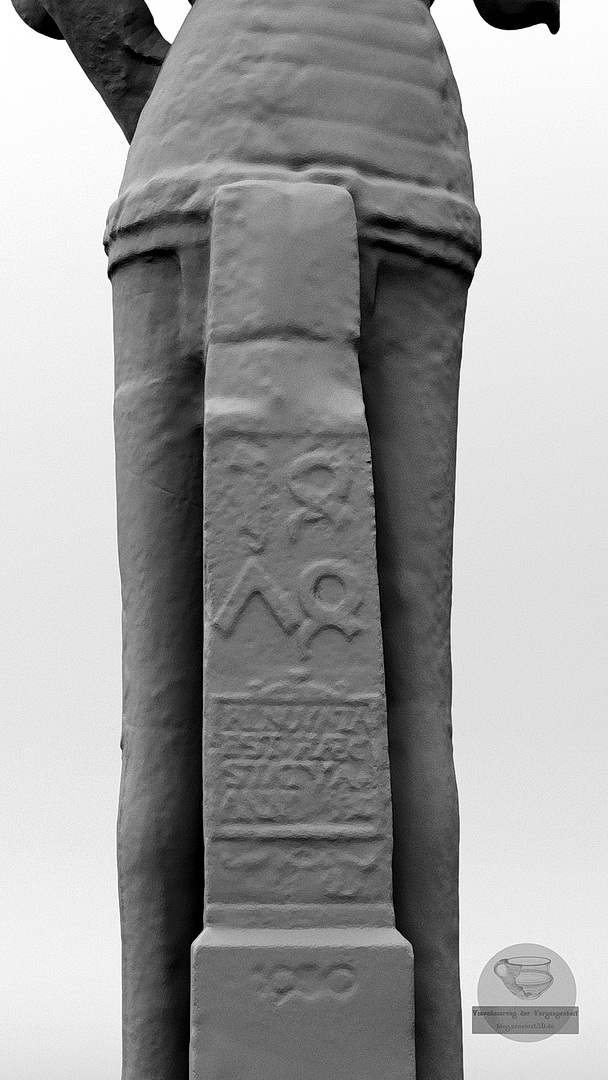
After the model was cleaned and repaired, several render images were made using Blender cycles. On the backside of the knight are the dates of its former renovations inscribed. The middle text is in Latin and shows the first repairs to be made in 1556. Above that, the year 18^8 is shown, as well as one of the last repairs to be made in 1930. Not mentioned are the repairing in the 2010ers that were only smaller ones.
As of now, the texture of the model has not been built because I only needed the geometry for an 3D Print that will be done shortly. The model itself can be found on Sketchfab.
If you are looking for the model to use it yourself you can download it from Sketchfab for free or if you would like to support this blog you can buy it from CGtrader
Comments and/or criticism are very welcome!
Are you interested in 3D scans, prints, reconstructions, workshops or questions?
